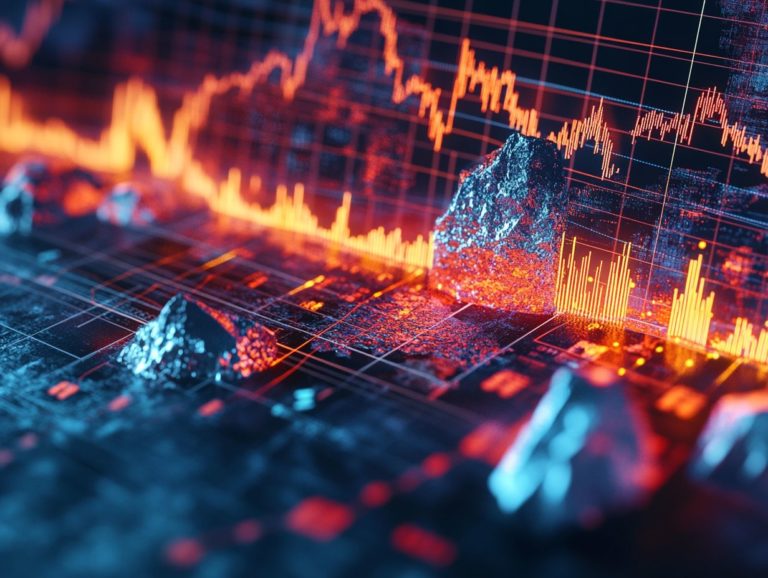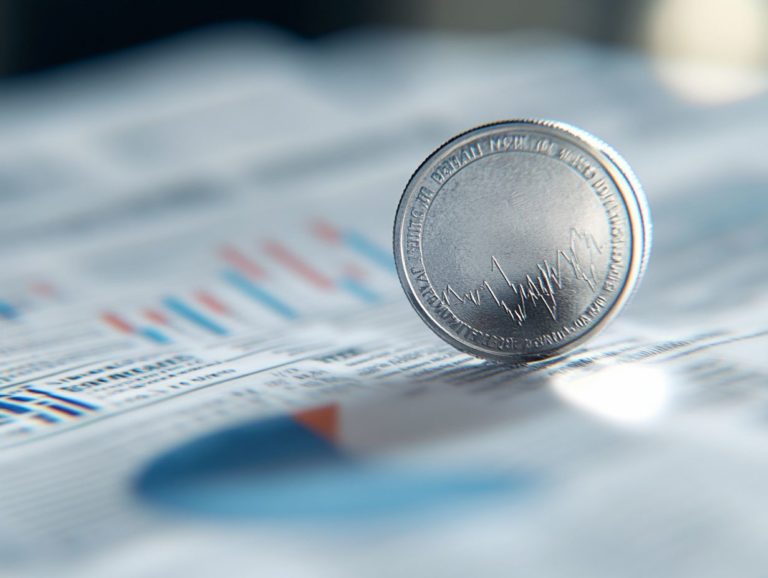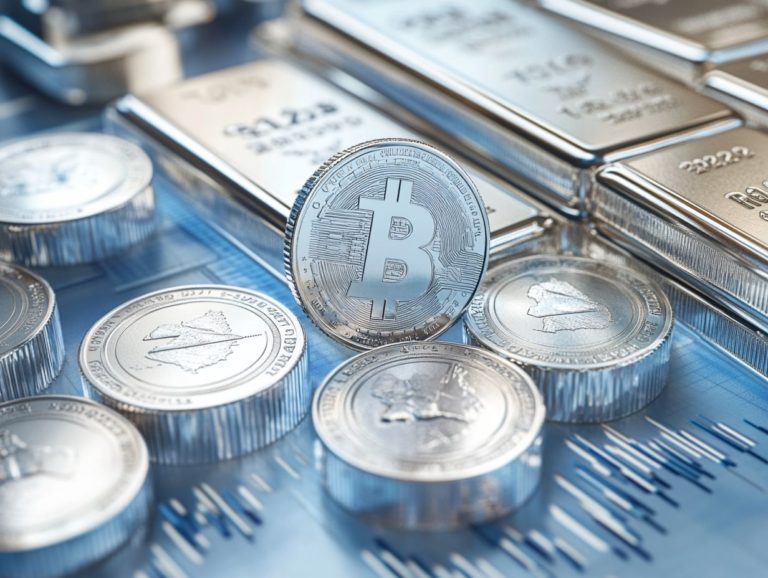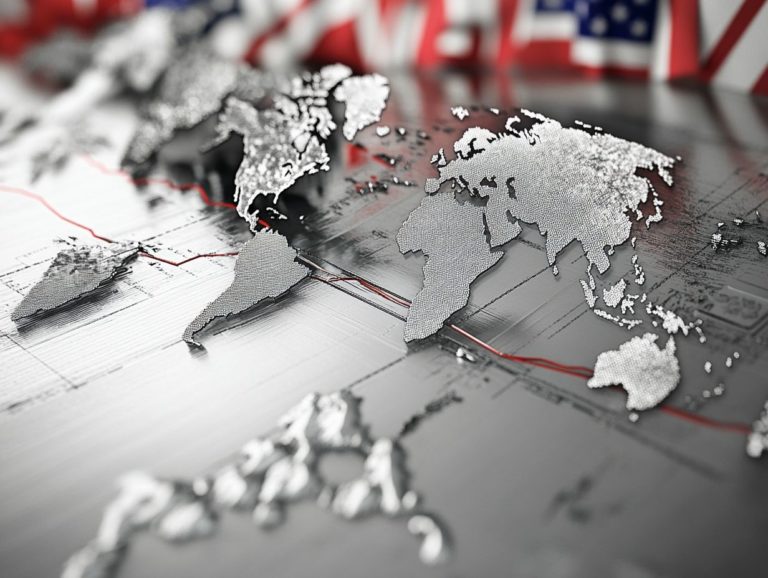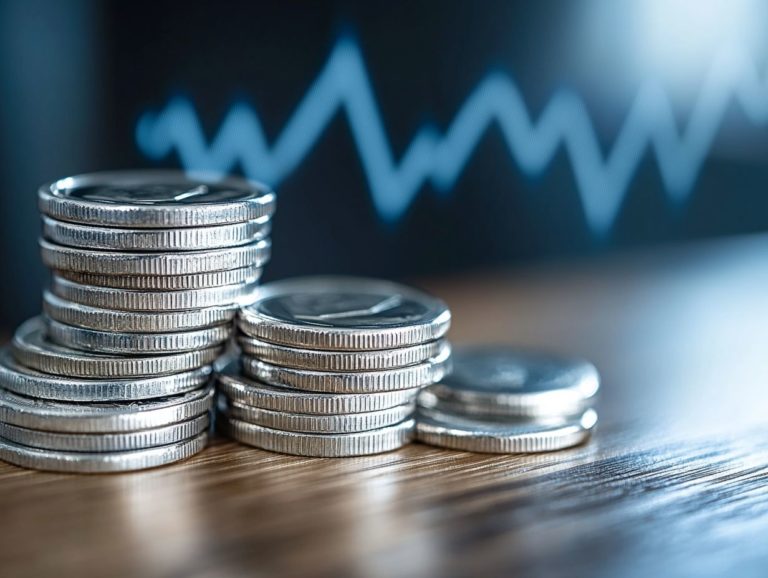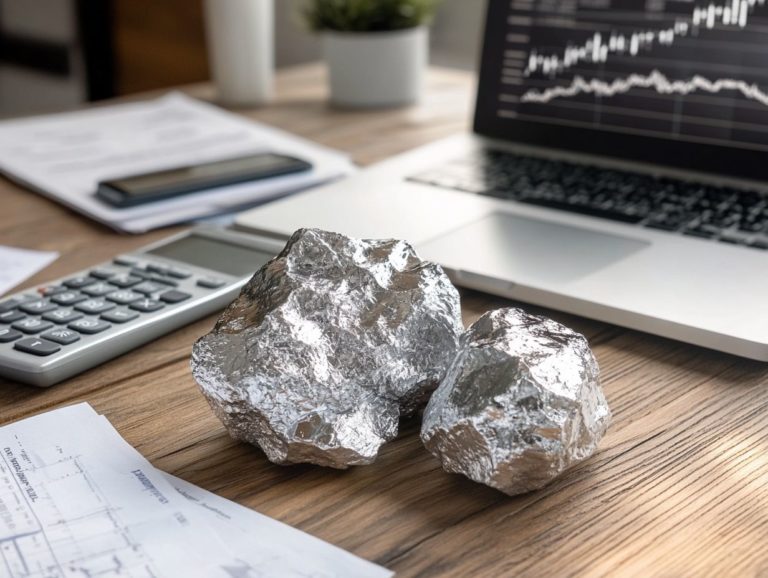The Relationship Between Silver and Gold Prices
Understanding silver and gold prices is crucial for investors. This knowledge helps keep you informed about the market.
This overview delves into historical trends while considering current market conditions. Discover the exciting factors that influence these precious metals, including economic conditions, political climates, and the ever-changing landscape of supply and demand.
You’ll find a discussion on the relationship between silver and gold, alongside effective investment strategies tailored for your needs. Expert predictions on future price movements equip you with a well-rounded perspective on these valuable assets, ensuring you navigate the market with confidence.
Contents
- Key Takeaways:
- Overview of Silver and Gold Prices
- Factors Influencing Silver and Gold Prices
- The Relationship Between Silver and Gold Prices
- Investing in Silver and Gold
- Forecasting Future Prices
- Expert Opinions and Predictions
- Frequently Asked Questions
- What is the relationship between silver and gold prices?
- Why are silver and gold prices correlated?
- Do silver and gold prices always move in the same direction?
- How does the value of the US dollar impact the relationship between silver and gold prices?
- Are there any other factors that can influence the relationship between silver and gold prices?
- What can I expect from the relationship between silver and gold prices in the future?
Key Takeaways:
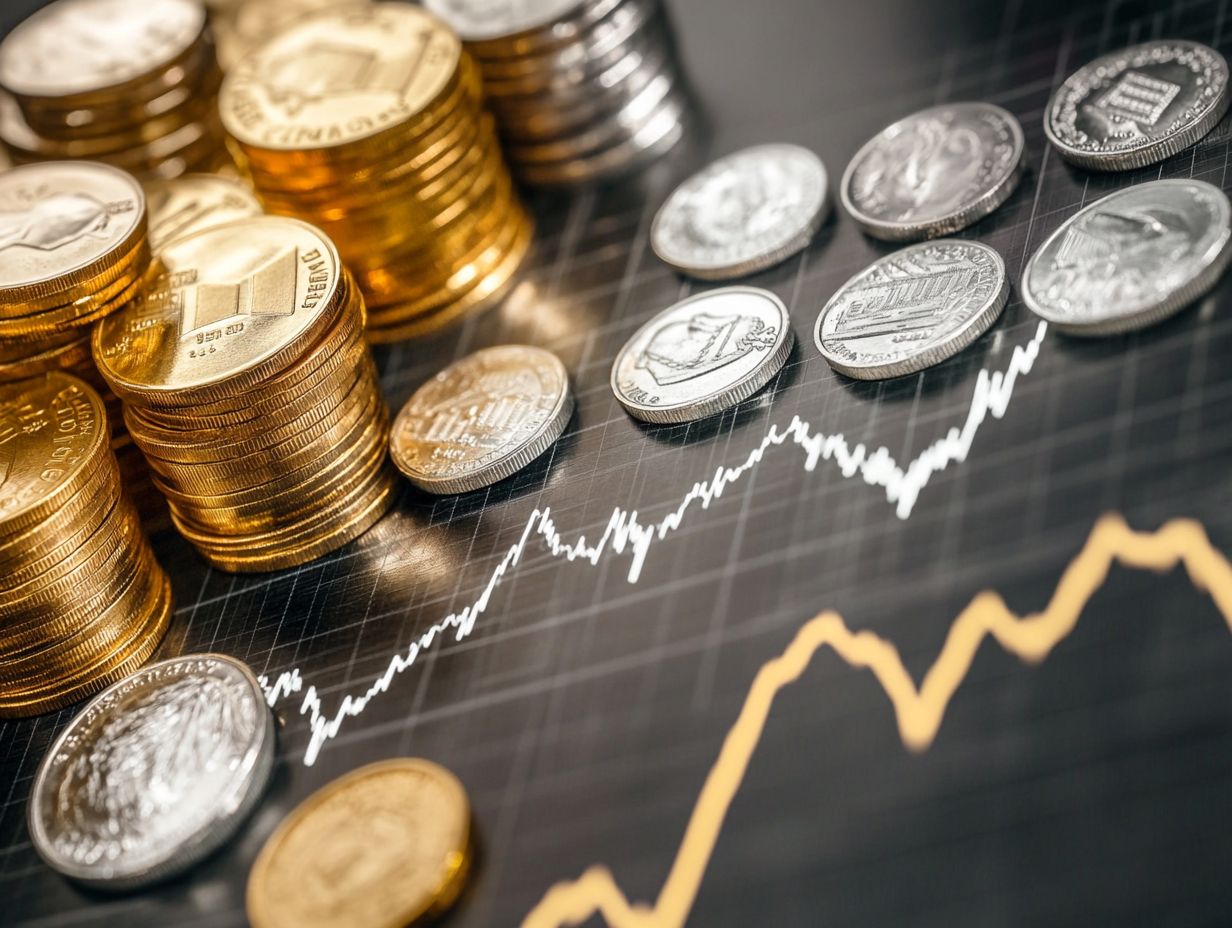
- Silver and gold prices are historically correlated and interdependent, with both metals being seen as safe havens during uncertain economic and political times.
- The global economy and political climate, as well as demand and supply, heavily influence the prices of silver and gold.
- When investing in silver and gold, it is important to consider long-term strategies and expert opinions on future price forecasts.
Overview of Silver and Gold Prices
The overview of silver and gold prices offers you a thorough examination of the historical performance of these precious metals, their current valuations, and what it all means for your investment strategy.
Gold is often seen as a safe place to invest during tough times when markets are unstable. It has seen its value shift in relation to silver, which boasts substantial industrial applications beyond mere investment. Grasping the price dynamics between these two metals is essential for anyone looking to safeguard against market volatility, particularly during financial upheavals like the COVID-19 pandemic.
Historical Trends and Current Market
Historical trends in gold and silver prices reveal a nuanced relationship that serves as a valuable lens through which to understand current market dynamics and future projections.
By looking into key milestones, particularly the extraordinary peaks of 2020 and 2021, you can uncover how factors like economic uncertainty and inflationary pressures have propelled these precious metals to remarkable heights. In 2020, gold surged to an impressive $2,067 per ounce, while silver followed closely, climbing to around $30 per ounce a clear reflection of heightened demand as investors flocked to safe havens.
As you consider the landscape in 2023, it s essential to note the fluctuations driven by interest rate changes and geopolitical tensions. These movements echo the volatility experienced during those pivotal years, making it crucial for you to reflect on historical data as you navigate the present market intricacies.
Factors Influencing Silver and Gold Prices
The factors influencing silver and gold prices are intricate and multifaceted. They encompass a wide array of elements, from the global economy and political climate to shifts in demand and supply.
Each of these components plays a crucial role in shaping how investors perceive and value these precious metals.
Global Economy and Political Climate
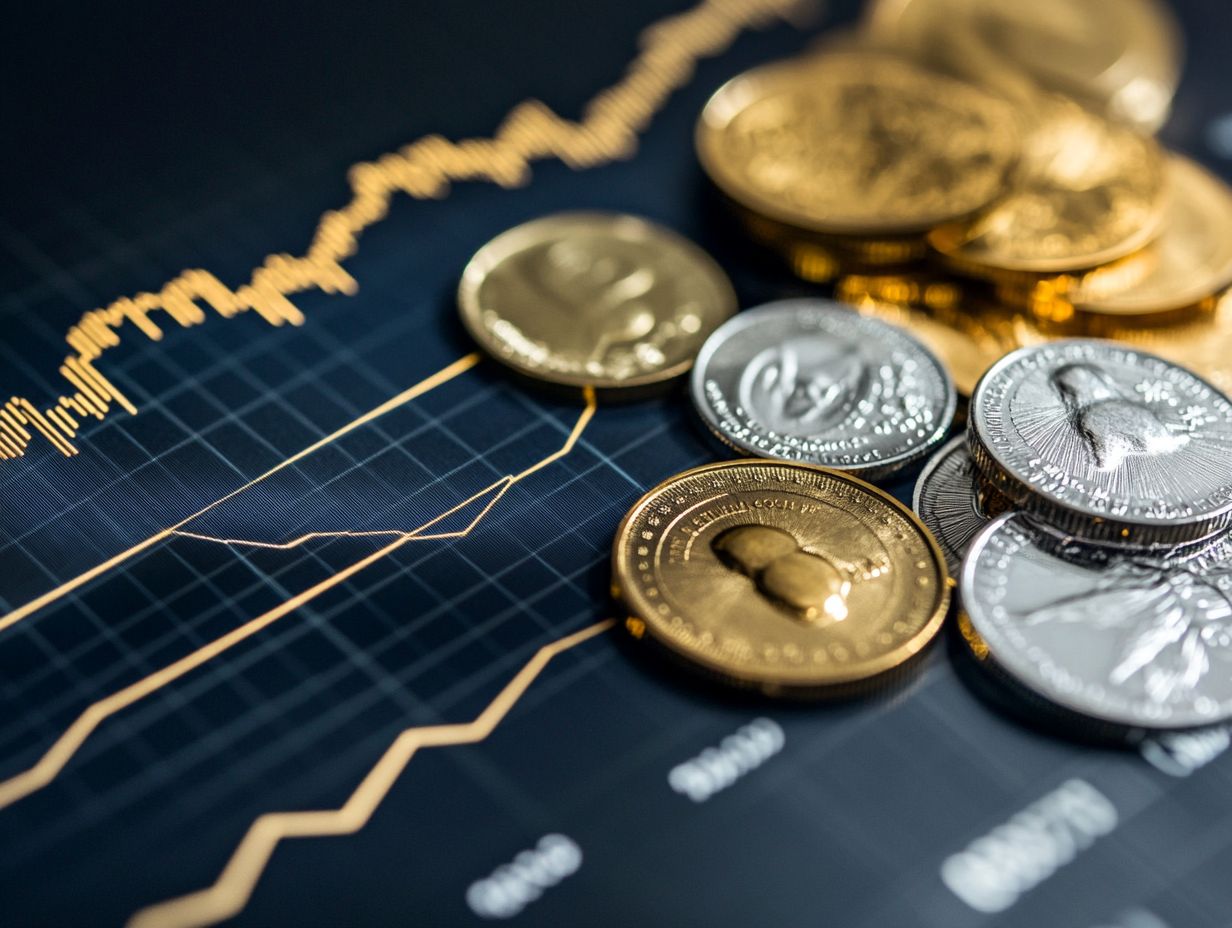
The global economy and political climate significantly influence the investment landscape for gold and silver, with their effects becoming especially noticeable during financial crises and events like the COVID-19 pandemic.
In times of turbulence, you may find that investors often turn to precious metals, perceiving them as reliable havens from market volatility and currency fluctuations. For instance, when the pandemic triggered unprecedented economic shutdowns, gold prices soared to record highs as both individuals and institutions sought to safeguard their wealth.
Similarly, rising geopolitical tensions be it trade wars or conflicts can push prices upward, as fear and uncertainty drive a rush towards these tangible assets. This collective behavior illustrates a broader trend where economic instability alters investor sentiment, reinforcing gold and silver s long-standing reputation as trusted stores of value.
It’s essential to act quickly in today’s volatile market. Stay informed and adapt your investment strategy today!
Demand and Supply
The dynamics of demand and supply for gold and silver play a pivotal role in shaping their market prices. While both metals are highly sought after for investment, they have unique industrial applications that significantly influence their demand.
For instance, silver is integral in the production of photovoltaic cells, making it vital for the renewable energy sector. Silver demand increases with technological advancements and changing energy policies. On the flip side, gold captivates primarily through the jewelry market, where its shimmering luster and rarity foster a persistent allure.
Supply factors, such as mining production levels, can dramatically impact market availability. Meanwhile, recycling initiatives provide alternative sources of these precious metals, helping to balance demand.
This interplay of factors creates a complex landscape for price determination. It is essential to stay informed about both the industrial uses and market dynamics of these valuable resources.
The Relationship Between Silver and Gold Prices
The connection between silver and gold prices is elegantly captured by the gold-silver ratio. This ratio reflects their price relationship and offers valuable insight into market sentiment, particularly during times of volatility.
Understanding this dynamic enhances your perspective on the precious metals market.
Correlation and Connection
The relationship between gold and silver prices highlights a significant connection that can offer you valuable insights for trading and hedging strategies.
Historically, when gold prices shift, silver often follows suit, as both metals serve as safe havens during economic uncertainty. For example, during times of inflation or geopolitical upheaval, when gold prices rise, silver values often increase too.
By closely monitoring the gold-silver ratio, you can capitalize on these trends! If gold starts to outperform silver, it might signal an impending reversal or a change in market sentiment. Understanding these dynamics, including the impact of currency fluctuations on gold, gives you the power to make informed decisions, whether your goal is to hedge against volatility or take advantage of price discrepancies, ultimately refining your trading strategies.
Investing in Silver and Gold

Investing in silver and gold demands a deep understanding of the myriad strategies and considerations involved. These precious metals present distinct opportunities for you to diversify your portfolio and effectively hedge against market risks.
Strategies and Considerations
When considering strategies for investing in gold and silver, it s essential for you to assess market volatility and grasp the intricacies of trading these precious metals.
Navigating through price fluctuations can feel overwhelming, yet it opens the door to unique opportunities for the astute trader. Employing strategies like spreading out your investments over time can significantly mitigate risks by allowing you to capitalize on lower prices without the stress of perfectly timing the market.
Recognizing that volatility influences market sentiment is crucial; it often dictates the optimal moments to buy or sell. By identifying patterns and adjusting your strategies accordingly, you can not only safeguard your investments but also enhance your potential returns in this dynamic landscape.
Forecasting Future Prices
Forecasting future prices for gold and silver requires you to delve into expert opinions and predictions, all shaped by various factors.
You’ll find that market conditions, economic indicators, and prevailing investor sentiments play a significant role in these assessments.
Expert Opinions and Predictions
Expert opinions and predictions about gold and silver prices provide valuable insights. These insights can help you navigate a volatile market.
By synthesizing the perspectives of analysts and market experts, you can gain a deeper understanding of the factors that drive future price movements. Many professionals watch macroeconomic indicators, geopolitical tensions, and shifts in monetary policy closely all of which can significantly impact the performance of these precious metals.
A rise in inflation or an economic downturn often boosts demand for gold and silver. These metals are considered safe-haven assets, which are investments people turn to during times of market uncertainty.
With these insights at your disposal, you can formulate strategies that align with current market trends. This ensures you remain poised and ready, even in the face of sudden fluctuations.
Frequently Asked Questions
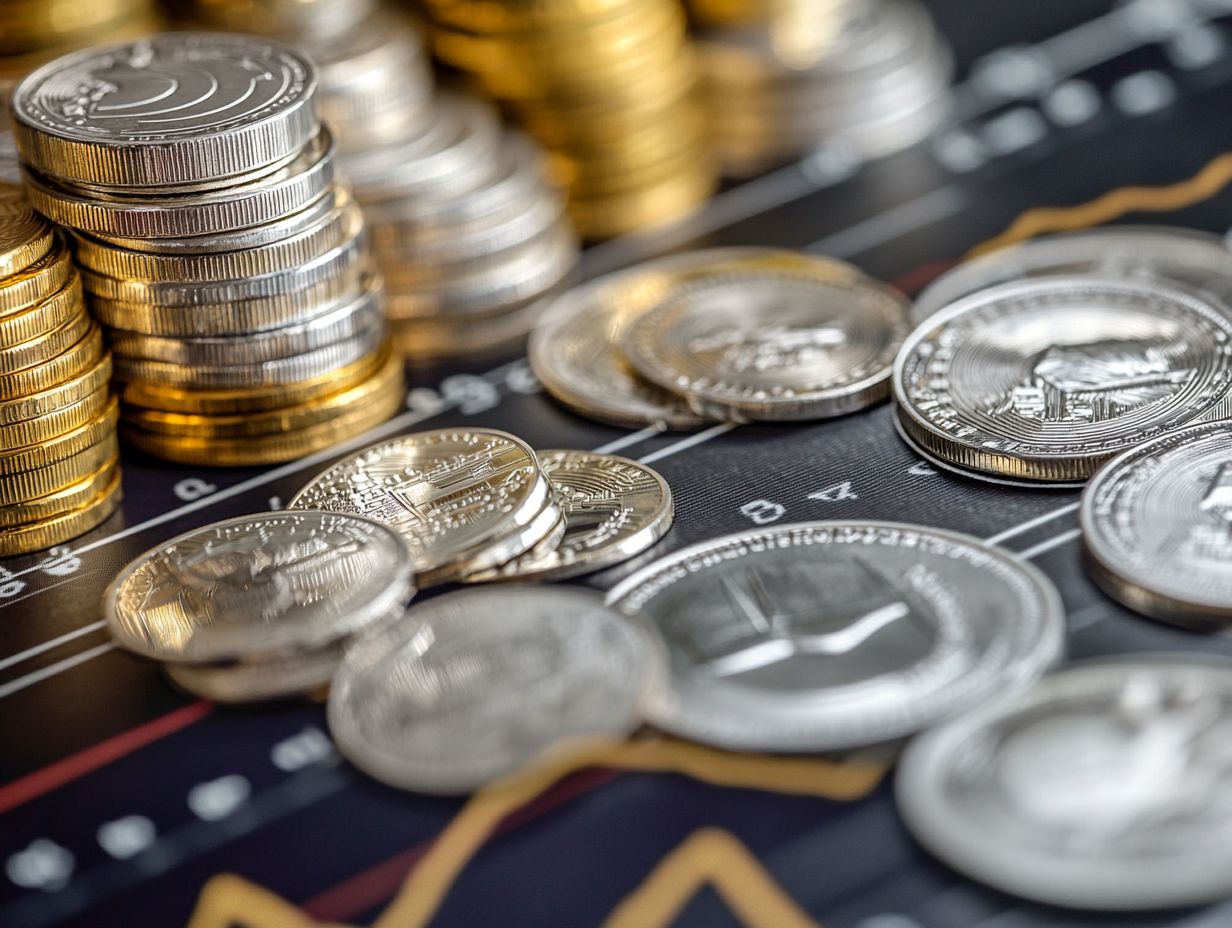
What is the relationship between silver and gold prices?
The relationship between silver and gold prices is a strong positive correlation. When the price of gold increases, the price of silver tends to increase as well.
This correlation arises from several factors. Both metals serve as safe-haven assets and are often viewed as alternative investments to traditional currencies.
Do silver and gold prices always move in the same direction?
No, while a positive correlation generally exists, prices can move in opposite directions. This can happen due to changes in supply and demand, economic conditions, or political events.
How does the value of the US dollar impact the relationship between silver and gold prices?
The US dollar’s value significantly impacts silver and gold prices. A strong dollar typically lowers the prices of both metals, while a weak dollar tends to raise them.
Are there any other factors that can influence the relationship between silver and gold prices?
Yes, factors such as industrial demand for silver, investor sentiment, and shifts in global economic conditions can all influence this relationship.
What can I expect from the relationship between silver and gold prices in the future?
While it’s impossible to predict future price movements with certainty, experts are confident that the positive correlation will continue in the long term. Both metals are expected to remain valuable assets and alternative investments.
Stay tuned for more updates on gold and silver!










